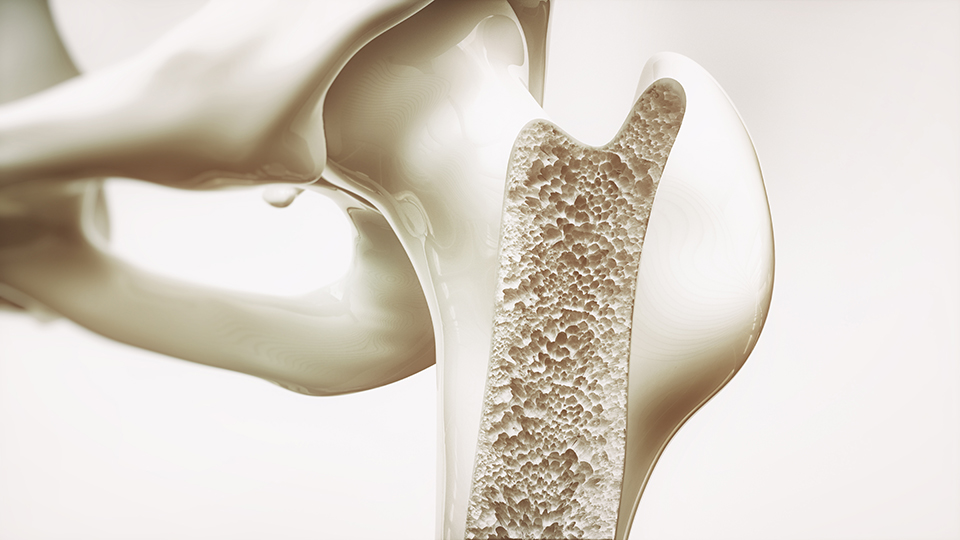Preventing Osteoporosis

You have the bones of a 70-year-old woman,” the doctor said. No 24-year-old wants to hear that news.
After many years of disordered eating, over-exercise, restrictive diets, amenorrhea, nutrient deficiencies and “gut issues” (like IBS and constipation), my body (and bones) showed it on a bone density scan.
The prescription to fix it?
“Get more calcium in yogurt, milk and cheese. Take a calcium supplement. And lift weights — but not too heavy,” the doctor sugessted— all in the name of “restoring my bones.”
Like a good patient, I nodded and smiled, however, I was already doing those things. Despite eating fat-free Greek yogurt, taking a calcium supplement and pumping iron, something wasn’t adding up.
According to the scan, I still had the bones of a 70-year-old woman. For some reason my body was not absorbing the calcium. At the time, no one ever explained to me a root cause behind osteoporosis.
Seven years later, my osteoporosis is now in remission — all because I learned and healed the root cause behind the bone disease.
Osteoporosis 101
Osteoporosis is a condition characterized by decreased bone density. Throughout our lifetime, our bones are in a constant state of renewal — new bone is made and old bone is broken down.
When we’re kids and teens, our body makes new bone faster than it breaks down old bone and our bone mass increases — hence the growing pains. Most people reach their peak bone mass by their early 20s, and as people age, bone mass is lost faster than it’s created.
In osteoporosis, this bone loss is exaggerated as bone mass breaks down and density decreases. Many health experts define osteoporosis as a “autoimmune disease” since the body is in a state of “attacking itself.”
Osteoporosis goes far beyond milk consumption or a daily calcium chew. As an autoimmune-like condition, osteoporosis shares important characteristics with other autoimmune conditions, specifically:
- Inflammation
- Leaky Gut or “Intestinal Permeability”
Osteoporosis is an inflammatory “reaction” where the body attacks itself (specifically bone mass). This autoimmune reaction is often triggered by a “leaky gut” and a stressful lifestyle.

Who Gets Osteoporosis?
Osteoporosis affects approximately 1-4 of all women and 1-8 men. While you may think that osteoporosis is an “older generation” disease associated with people over age 50, younger individuals are not off the hook.
Risk factors include:
- Caucasian ethnicity
- (1-2 women with osteoporosis)
- Ovary removal and Menopause (hormone shifts)
- Late-onset puberty history
- Women with irregular periods or amenorrhea (lack of period for three or more months)
- History of disordered eating
- Over exercise
- People with nutrient deficiencies, leaky gut or poor nutrient absorption
- Overactive thyroid (hypothyroidism)
Common Symptoms
Unlike a runny nose during a cold or experiencing joint pain with arthritis, osteoporosis can go undetected for years until a more serious injury, like a fracture or stress fracture occurs. In fact, 50 percent of women and 25 percent of men with osteoporosis will suffer a fracture at some point in their lifetime. Common symptoms to look out for that may suggest your increased likelihood of having the disease include:
- Frequent stress fractures (especially in feet or hips)
- Shin splints
- Back pain (caused by an undiagnosed collapsed vertebrae or fracture)
- Loss of height over time
- Stooped posture
- Digestive distress (chronic bloating, constipation, IBS, GERD)
How to prevent Osteoporosis
Bone health is built upon a foundation solid nutrition—the “medicine” for making a healthier body overall. Fat soluble vitamins (vitamins A, D, K2 and E) and saturated fats are arguably just as important as calcium because these nutrients help the body absorb calcium. These vitamins can be found in foods like egg yolks, raw nuts and seeds, organic meats, avocado, extra virgin olive oil and cod liver oil.
As well as consuming a nutrient-dense diet, minimizing nutrient-depleting foods helps optimize bone (and gut) health.
Two nutrient-lacking staples in the Standard American Diet include: processed, refined grains and conventional dairy — two food sources highly correlated with inflammation and gut conditions (like “leaky gut” and IBS). However, there are still plenty of ways to incorporate calcium-rich foods in your diet while avoiding dairy and processed foods. This includes things like almonds (or almond milk), spinach, green beans, kale, garlic and tofu. Just be sure to aim for a baseline of 600-800 mg of calcium daily from your food.
When it comes to bone strength, incorporating exercise can be just as important as what you eat. Walking, weight lifting, high intensity interval training and yoga all play a part in increasing bone density — just so long as you’re not overdoing it. Repeat exercises and pounding does have the potential to add wear and tear on our bodies.

Last, but not least: listen to your body.
Given osteoporosis’ connection to individuals who tend to: overtrain, suffer from amenorrhea or have underlying gut conditions or nutrient deficiencies, intuitiveness with your body is essential for healing.
Intuitiveness with my own body was essential for my own healing.
Getting past the obsession I had with overtraining, no longer running on my stress fractures and giving myself “permission” to eat more were big steps in not only caring for my body, but listening to my body (more than the rules I had concocted in my head).
Don’t worry about consuming tons of dairy, or adding an extra calcium supplement to your day, just eat right, stay active (without overdoing it) and listen to your body and your bones will strengthen over time.







